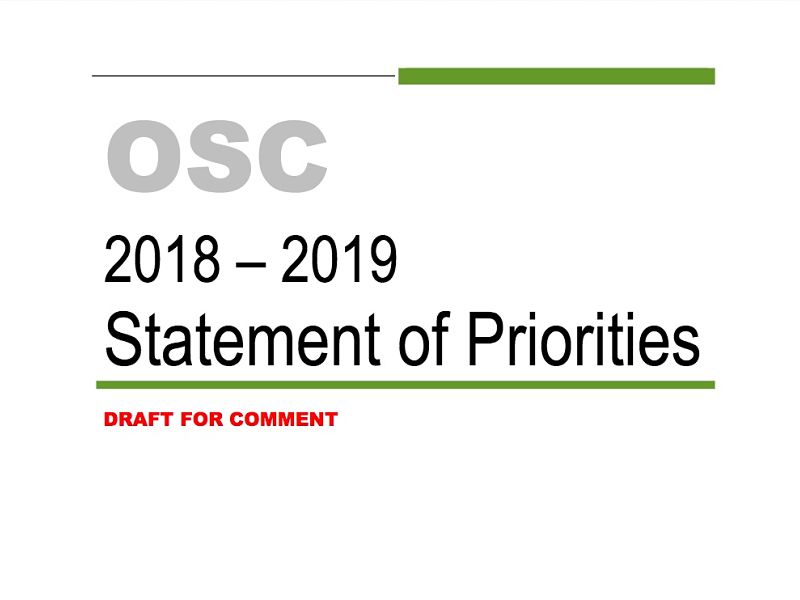
The introduction of a best interest standard for advisors remains at the top of the Ontario Securities Commission’s (OSC) agenda for the coming year.
The OSC on Thursday published its 2018-2019 Draft Statement of Priorities, setting out its policy agenda for the coming fiscal year.
In the draft statement, the OSC pledges to publish rule proposals for the introduction of a best interest standard in the coming year, alongside a series of targeted reforms to client-advisor relationships that are being pursued by the Canadian Securities Administrators (CSA), including measures to address advisors’ titles and proficiency standards.
“Access to affordable, high quality and unbiased investment advice will always be a core investor expectation. Investor trust and confidence in the financial system is critical and can only be attained when achievement of investment objectives is a mutually shared outcome for advisors and investors,” the OSC says in the draft statement.
Once again, the OSC is pledging to address the industry’s use of embedded commission structures. On this issue, the regulators have been slower to set a policy direction. It’s still not clear whether they intend to ban embedded commissions.
Instead, the OSC says only that it will, “Publish policy recommendations on embedded commissions to mitigate the investor protection and market efficiency issues,” and that it will also publish proposals to enact those recommendations, but it’s not committing to specific reforms.
Similarly, on the issue of dispute resolution and clients’ access to restitution, the OSC says it intends to work with the other regulators that oversee the Ombudsman for Banking Services and Investments (OBSI) to strengthen OBSI, but it is not committing to specific policy actions.
“The OSC believes that a regulatory roadmap must be developed addressing the recommendations in the independent evaluator’s report and, in particular, that OBSI’s decisions should be binding on its members,” it says.
However, the OSC does not promise to adopt that report’s recommendations; saying only that it will, “… publish a plan to enhance compliance with OBSI’s recommendations and a response to the OBSI independent evaluator’s other recommendations, while providing a robust oversight framework.”
On investor disclosure, the OSC says it intends to evaluate whether its CRM2 and point-of-sale disclosure projects are achieving their goals of, “enhancing investors’ understanding of the costs and fees associated with investment products.”
On the compliance front, the OSC will:
- carry out compliance reviews on “high-risk” firms in the coming year;
- examine firms’ sales practices; and
- target emerging risk areas such as new business models, online advice, and the growing exempt market.
The regulator also aims to improve the efficiency of its enforcement efforts, encourage industry whistleblowers and improve the collection of unpaid sanctions.
The draft statement also indicates that the OSC will be stepping up its work in emerging parts of the industry by undertaking issue-oriented reviews of cryptocurrency and initial coin offering issuers (ICOs), and the blockchain industry. The OSC will also enhance its guidance around whether ICOs should be considered securities, and implement the orderly transfer of syndicated mortgage investments to OSC oversight.
Elsewhere in the draft statement, the OSC commits to a variety of measures to enhance enforcement, bolster its oversight of systemic risk, including OTC derivatives markets, cybersecurity, and financial benchmarks, and ease the regulatory burden where possible (earlier this week the CSA published proposals for curbing the burden on issuers).
“We are pursuing an ambitious regulatory agenda that is responsive to our evolving capital markets,” says Maureen Jensen, OSC chairwoman and CEO of the OSC, in a statement. “We will continue to support fintech innovation, advance measures to better protect investors, and initiate projects to lighten the regulatory load for businesses.”
The draft statement is out for comment until May 28, and a final version must be delivered to the Ontario minister of finance by June 30.